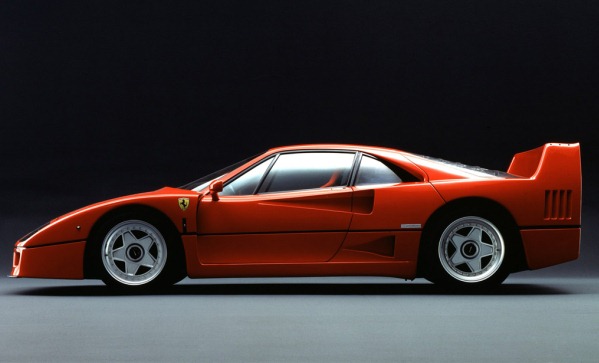Once upon a time, car companies were driven by the men who had founded them – men whose last names were emblazoned above the factory doors and on the back panels of the cars they had dreamed up. Mr. Porsche. Mr. Honda. Mr. Lamborghini.
Mr. Ferrari.
It sounds patriarchal, but these were the days of greatness — when the work of the hands of the founders could still be seen in the final product. No design by committee: hundreds of engineers and craftsmen might have been involved, but there was only one captain at the helm of the ship.
This is the story of the last Ferrari built that way.
The ’80s started on a down note for Ferrari, and not just because Enzo didn’t like hair bands. The company had fallen from the forefront of the racing scene and Enzo, himself, was fast approaching his ninetieth (and final) year.
You’d never know it, though. “Il Comentadore,” as he was known, had just pursued and won the hand of the latest in a string of mistresses, and was a strong influence at the company. He was a tall, foreboding figure – often accused of lacking empathy for the racing drivers who risked so much and too often sacrificed themselves on the altar of speed.
Enzo wanted a car to embody his legacy – a car without compromises. A road-going car that was head and shoulders above anything arch-rival Porsche or upstart Lamborghini could hope to build. The result took its bow at the 40th anniversary of Ferrari, one year before Enzo died.
To appreciate the F40, it’s important to understand what the average car of that time was like. A solid family car, like a Honda Accord, for instance, had 110 hp and was capable of a 0-60 mph sprint in just under 10 seconds. Something sporty like a BMW 3-series might manage 170 hp and nip to 60 in under eight.
The Ferrari F40 had 471 hp, produced from a twin-turbo 2.9L V8 engine. It was made of ultra-light materials like carbon fibre, aluminum and kevlar. It also cost $400,000 in a time when the Accord would have set you back ten grand.
The result? Less weight than a modern Miata and a run to 60 in half the time of the BMW. By the time the Accord reached highway speed, the F40 would be going over 200 km/h, a red blip on the horizon. Top speed? It was the first production car to crack 200 mph.
Even by today’s standards, the F40 is fast, outpacing exotic fare like the Pagani Zonda. And it was never intended to be a drag racer: on the track, its light weight and enormous power allow it to chase down modern-day track specials. Assuming, of course, you’ve got the stones.
F40 eschews creature comforts. No A/C, no radio, no carpet, no door handles. All you get is power, speed and danger. If you lose it in a curve, it’ll bite you – hard.
This year marks the 25th anniversary of the F40. Enzo’s last Ferrari remains, much like the man himself, a force, an icon, a symbol of a time when speed required ability and courage.
——————–
Image courtesy of Supercars.net.


